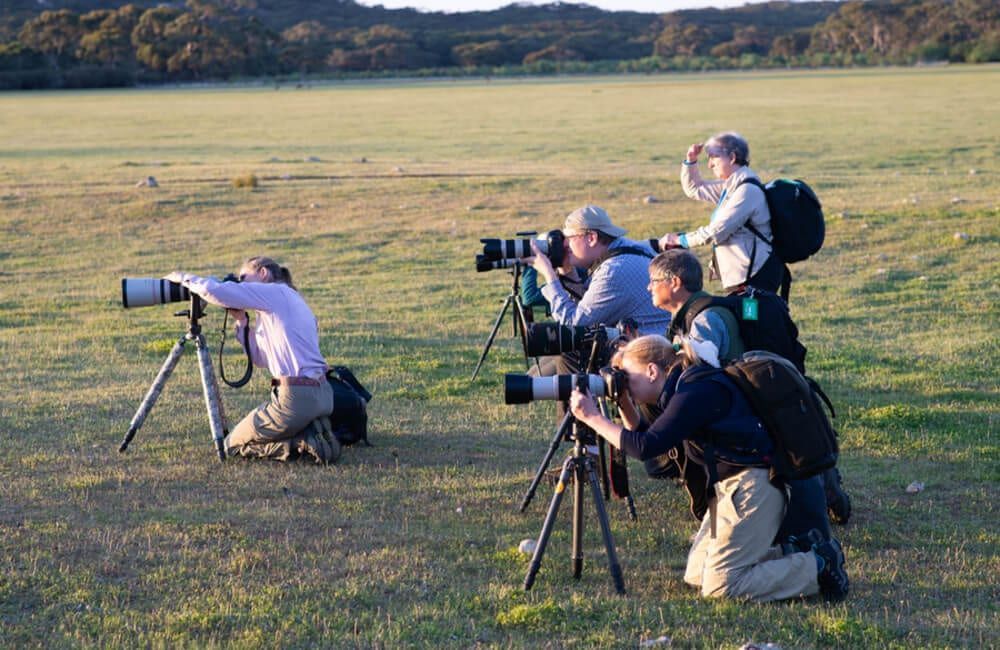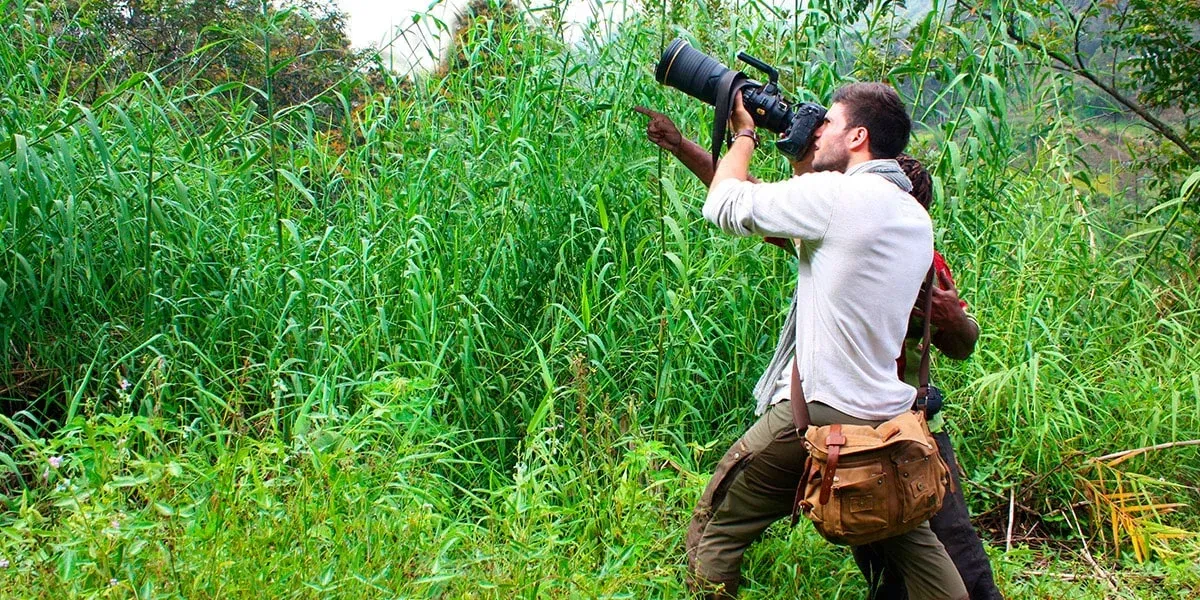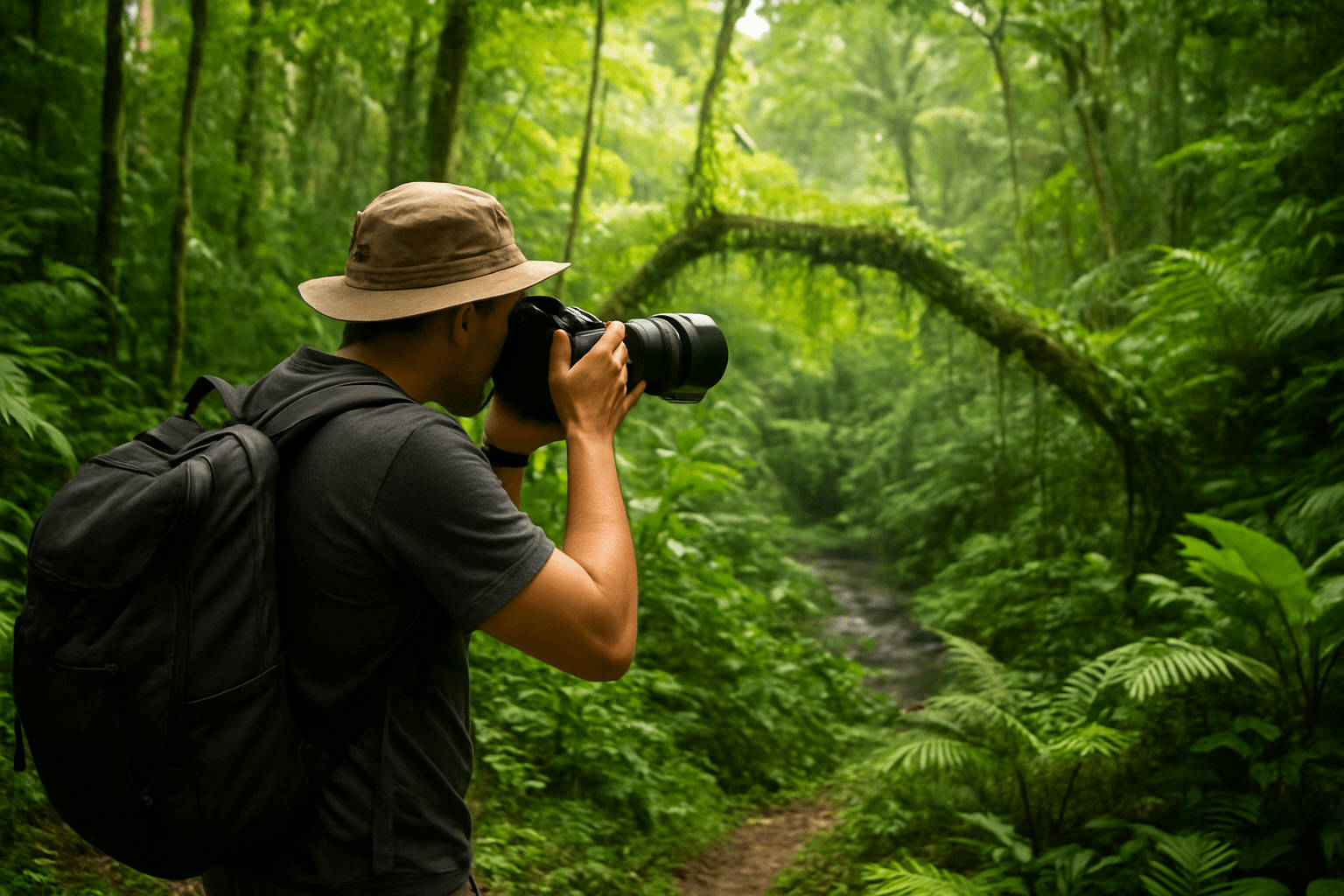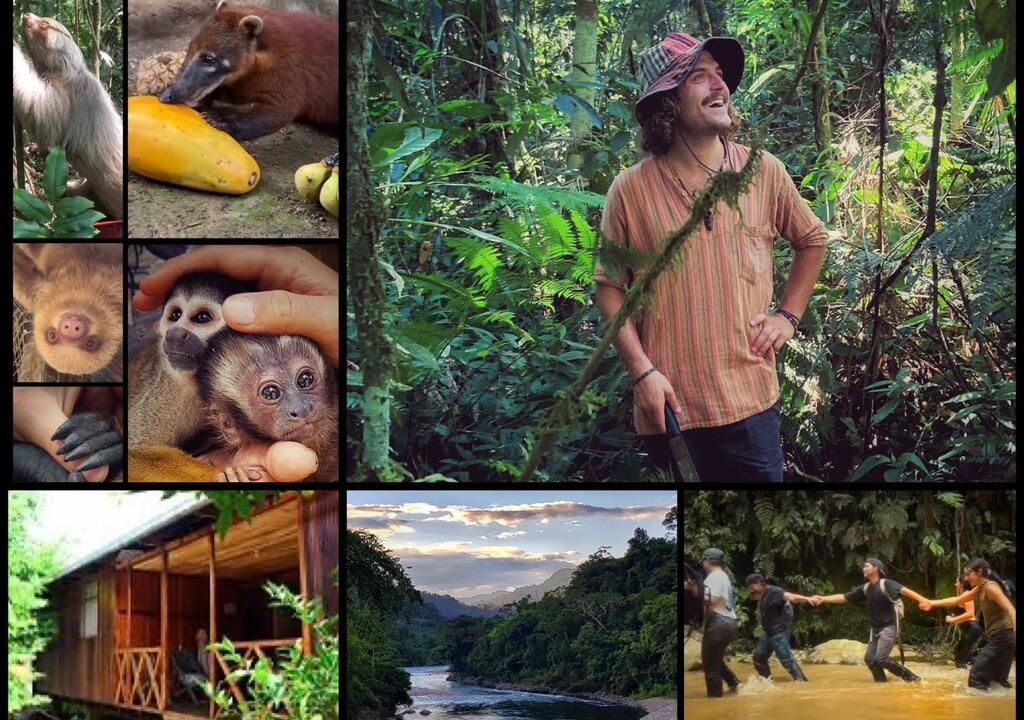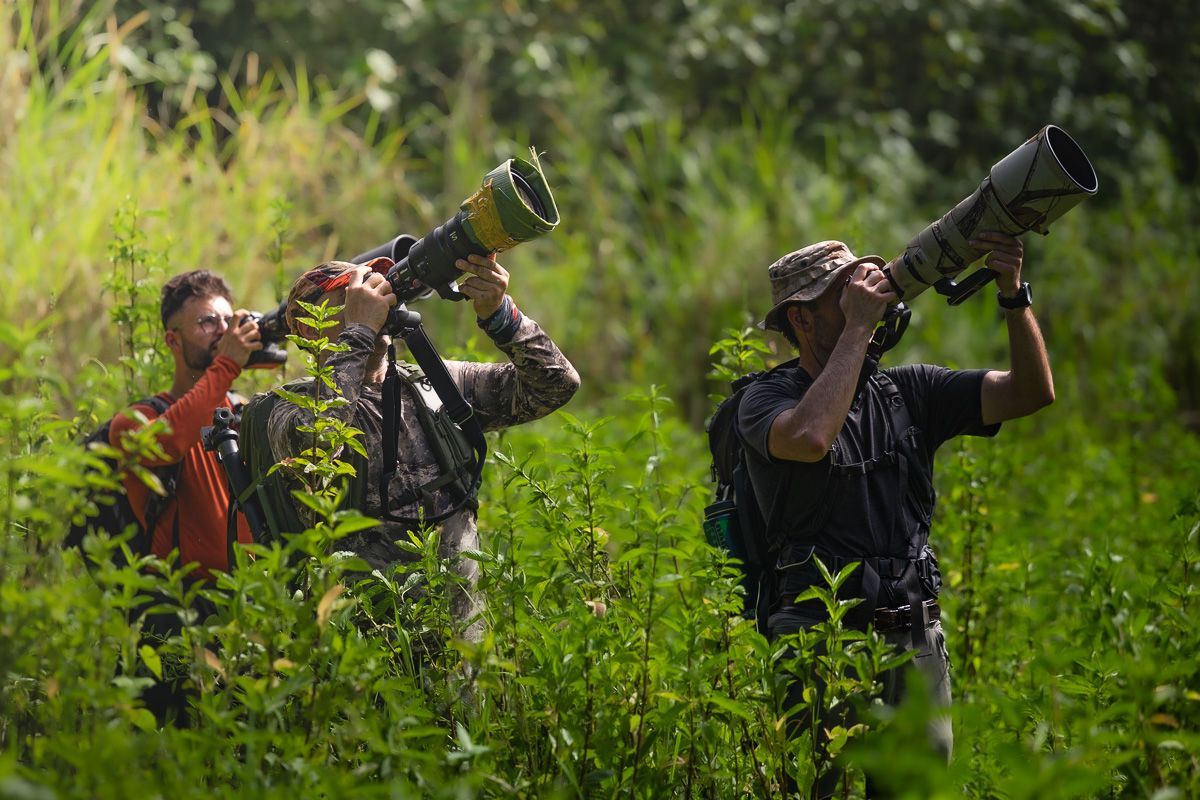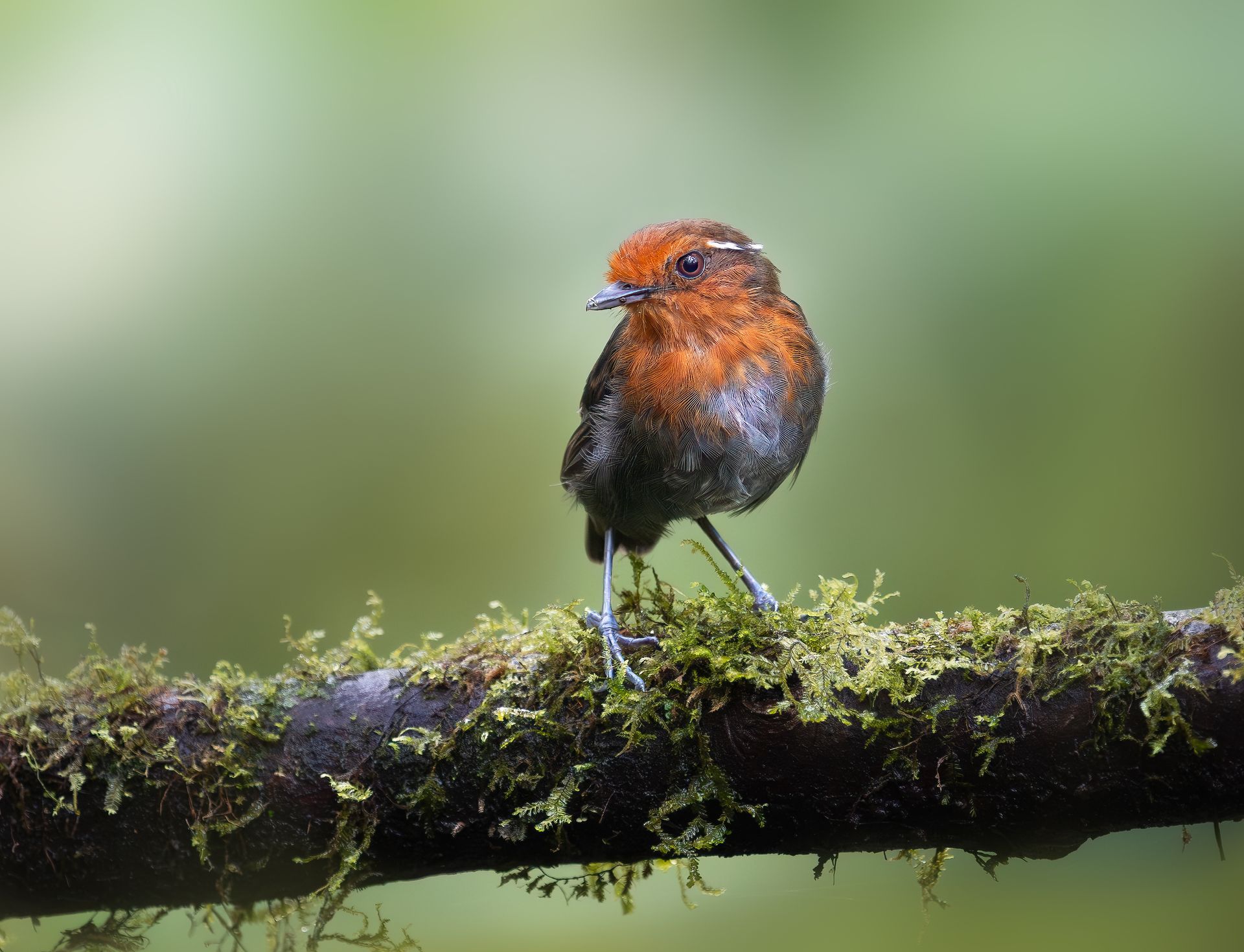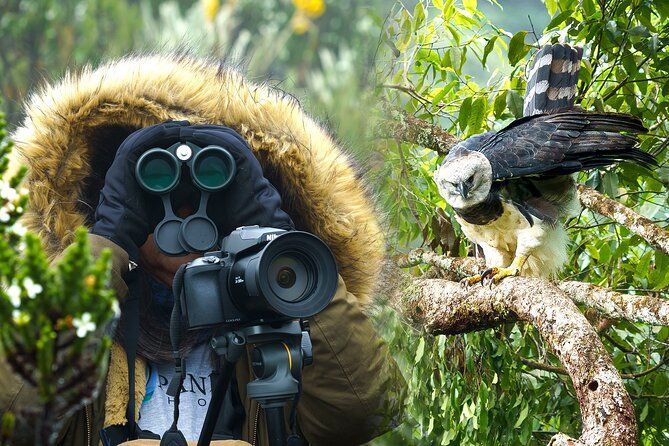Ocellate Antbird: Stunning Close-Ups from Colombia's Dense Tropical Jungles
In the heart of Colombia's humid tropical jungles lives the Ocellate Antbird (Phaenostictus mcleannani), a striking bird best known for its vivid facial pattern and close relationship with army ant swarms. For photographers and birding enthusiasts willing to navigate the thick lowland forests, this species presents thrilling opportunities for unique and dramatic close-up shots. Its bold appearance, elusive behavior, and specialized feeding habits make it one of the most compelling ant-following birds to photograph in Colombia.
What Makes the Ocellate Antbird Special?
- Ant-Follower Extraordinaire: Relies heavily on army ant swarms to flush out prey, allowing close-range observation.
- Unique Facial Markings: Its black mask, white spots, and pale blue skin around the eye create a memorable and expressive portrait.
- Secretive but Predictable: Though often hidden, they follow a routine with ant swarms, offering photographers the ability to anticipate their presence.
- Social Behavior: Ocellate Antbirds often appear in mixed flocks with other ant-following species, providing rich photo storytelling opportunities.
Where to Photograph the Ocellate Antbird in Colombia
Ocellate Antbirds are typically found in humid lowland forests of the Pacific and Amazonian regions of Colombia. These areas are home to high biodiversity and present perfect conditions for army ant activity that attracts these birds.
Key Photography Hotspots:
- Reserva Natural El Pangán (Nariño): Located on the Pacific slope, this remote reserve has a high density of ant-following birds.
- Amacayacu National Natural Park (Amazonas): A prime destination in Colombia’s Amazon region for forest floor bird species.
- Parque Nacional Natural Utría (Chocó): Offers excellent jungle trails and consistent sightings of antbird species.
- Rio Claro Nature Reserve (Antioquia): While primarily known for cave and river birds, this reserve occasionally hosts ant swarms that attract Ocellate Antbirds.
Working with local guides in these areas is essential. They can track ant swarms and locate known foraging routes.
Best Times to Visit
Timing is key for successful Ocellate Antbird photography. These birds are elusive and best seen when they are actively feeding.
- Rainy Season (March to May & October to November): Higher insect and ant activity makes this the best time for sightings.
- Early Mornings (6:00 AM to 9:00 AM): Birds are most active and the light is diffused, ideal for photography.
- During Ant Swarm Activity: Plan to spend time following active ant swarms—this is when the bird is least shy and most visible.
Photographers should prepare to stay in jungle lodges for multiple days to wait for the perfect ant swarm encounter.
Recommended Camera Gear
The jungle’s low light and quick-moving subjects require reliable, high-performance gear.
- Camera Body: Choose models with strong high ISO capabilities (ISO 3200+) and fast, silent autofocus.
- Lens: A 300–600mm lens with image stabilization is ideal. A zoom lens (like a 100–500mm) offers flexibility when shooting in dense foliage.
- Flash (Optional and Ethical): If permitted, a soft fill flash with a diffuser can enhance shots in the dim understory.
- Rain Protection: Use dry bags, lens covers, and silica gel to protect gear in humid conditions.
- Tripod/Monopod: A lightweight monopod with a fluid head helps stabilize long shots without adding bulk.
Techniques for Capturing Stunning Close-Ups
Ocellate Antbirds present a unique challenge due to their secretive habits. To maximize results:
- Follow the Ant Swarms: Track ant swarms quietly with a guide. Birds will often follow for extended periods.
- Use Silent Shutter Modes: Prevent scaring birds away with noise.
- Manual Settings: Use manual or semi-manual exposure settings to compensate for tricky light.
- Focus on the Eye and Mask: Sharp eyes and facial detail are key to a compelling bird portrait.
- Shoot Sequences: Take multiple shots to increase the chances of capturing the perfect moment.
- Frame Environment: Include army ants, leaf litter, or other birds to tell a richer story.
Ethical Photography Practices
Ethics matter—especially when photographing sensitive forest birds:
- Avoid Flash Overuse: In low-light environments, flash can disturb sensitive birds. Use only if allowed and always diffuse it.
- No Baiting or Feeding: Respect natural behaviors. Let birds come to ant swarms on their own.
- Stay on Trails: Jungle ecosystems are fragile. Stick to established paths to protect flora and fauna.
- Minimize Playback: Use bird calls only with moderation and never at nesting sites.
- Respect Wildlife First: Photography should never come at the expense of the bird’s wellbeing.
Working with Local Experts
Colombian guides are incredibly knowledgeable and can help track antbird behavior:
- Trained Trackers: Many jungle guides are experts at spotting ant swarms and predicting movement.
- Conservation-Focused Lodges: Choose stays that support local conservation, such as El Pangán and La Planada.
- Cultural Insight: Guides often share stories and ecological knowledge that enrich the experience.
Hiring local guides also ensures that tourism revenue supports communities and rainforest protection.
Why Travel with Retorno Photo Tours
At Retorno Photo Tours, we specialize in immersive, ethical bird photography experiences. When it comes to photographing the Ocellate Antbird, we offer:
- Customized Jungle Itineraries: Visits to proven antbird habitats in Chocó and the Amazon.
- Field Gear Recommendations: Pre-trip checklists for tropical conditions.
- On-Site Photography Coaching: Help with lighting, positioning, and field settings.
- Eco-Friendly Partnerships: All tours support conservation lodges and reforestation programs.
Whether you’re building your tropical bird portfolio or capturing rare ant-following behaviors, our tours are designed for flexibility and success.
Bonus: Other Ant-Followers to Watch For
While searching for the Ocellate Antbird, you may also encounter:
- Bicolored Antbird (Gymnopithys bicolor)
- Spotted Antbird (Hylophylax naevioides)
- Chestnut-backed Antbird (Poliocrania exsul)
- Ruddy-tailed Flycatcher (Terenotriccus erythrurus) – a curious bird often near ant swarms
These species often travel in loose associations, making ant swarms an incredible opportunity for multi-species photography.
Conclusion
The Ocellate Antbird is a crown jewel among Colombia’s tropical forest birds. Its expressive face, fascinating behavior, and rare visibility make it an incredibly rewarding species for patient, respectful photographers. Following ant swarms through the misty undergrowth is not just a quest for the perfect shot—it’s an immersion into one of the most vibrant and mysterious ecosystems on Earth.
Join Retorno Photo Tours and let our expert team guide you into Colombia’s heart of darkness—where moments of brilliant avian life await in the shadows of the forest floor.



